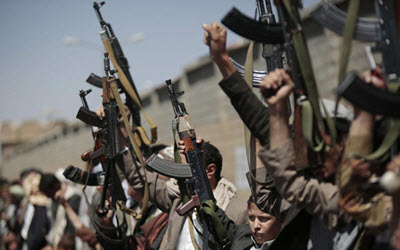Iran regime’s provocations stem from its weakness
Friday, 02 December 2016/NCRI
The head of the strategic research center in Kuwait, Sami Faraj says Iran regime’s military capacity is very limited and weak particularly in the navy in comparison with Arab countries, although they are looking for expansionism in the region. Sky News TV on November 29, 2016 reports: Iran’s regime openly seeks to stabilize its power in countries of the region.
Iran regime’s Chief of Staff of the Armed Forces, Mohammad Bagheri stated, Iran is trying to establish naval bases in Yemen or Syria because the naval bases have more value than strategic nuclear power in terms of military. This issue specifies the strategy of the Iranian regime. This regime is practically meddling in Syria by dispatching para military forces there. They also support the Houthi militias in Yemen and prevent the legitimate government to retake the power.
Sami Faraj further explained:
“The statements of the Iranian leaders is indicative of their intention. Nevertheless, their intention amounts to no criterion for us. We have to estimate the real power of the Mullahs’ regime. Does the regime have the ability to dominate this region? I take an example here. During Ahmadinejad’s presidency, a commercial ship of the Iran regime was hijacked by pirates, to rescue the hijacked ship Iranian navy needed one year to prepare several ships. Consequently, the navy is not able to extend and establish Marine bases even in the Persian Gulf. The navy does not even have very much power in comparison with other countries of the region.”
Sky News TV: why does the Chief of Staff for the Armed Forces of Iran state that the Marine bases are more important to them than the nuclear technology?
‘Domination Seeking’ is a major issue. It stems from a hostile policy. If you want to protect your country from non-conventional powers, you must have non-conventional armaments like the nuclear, chemical, or biological weapons. Iran regime is now thinking about the nuclear power but is facing limitations and these constraints make it difficult for them to expand their power.
Iran’s missile power is only flamboyant, and when their missiles cannot reach their enemies’ base, they are desperately seeking bases close to the borders of Turkey and Israel.
Iran: Continuous Export of Crisis, to Cover Its Social Explosiveness
NCRI Iran News/ Friday, 02 December 2016 /
Recently intercepted weapons shipments in the Arabian Sea appear to prove that Iran has been supplying the Houthi rebels in Yemen.
The weapons, seized by Australian, French and U.S. warships, were Russian and Iranian; some of them had markings similar to those used by the Houthi fighters according to an independent report.
The Conflict Armament Research (CAR) report gives us the most concrete evidence to date that Iran is supporting the Houthis.
Vice Admiral Kevin M. Donegan, the commander of U.S. Naval Forces in the region, announced that five weapons shipments had been seized since April 2015.
CAR’s report focuses on three shipments recovered in early 2016 by the crews of the HMAS Darwin, FS Provence, and USS Sirocco, who were operating as a part of a multinational Combined Maritime Force task force.
It states: “CAR’s analysis of the seized material … suggests the existence of a weapon pipeline extending from Iran to Somalia and Yemen, which involves the transfer, by dhow, of significant quantities of Iranian-manufactured weapons and weapons that plausibly derive from Iranian stockpiles.”
On one ship headed for Yemen, the French crew who searched the boat found around 2,000 Kalashnikov-style rifles with sequential serial numbers.
The CAR report noted that the rifles were “characteristic of Iranian manufacture” and were shipped alongside 64 Hoshdar-M sniper rifles also bearing sequential serial numbers, and nine Russian Kornet antitank guided weapons.
In February, the Austrailian ship intercepted a boat with 2,197 weapons including roughly 100 Iranian-made RPG-7-style rocket launchers, whilst in March, the American ship found over 1,500 rifles in addition to rocket launchers and 12.7mm heavy machine guns.
The findings are limited but the report suggests evidence of a weapons pipeline from Iran to Somalia and Yemen.




















